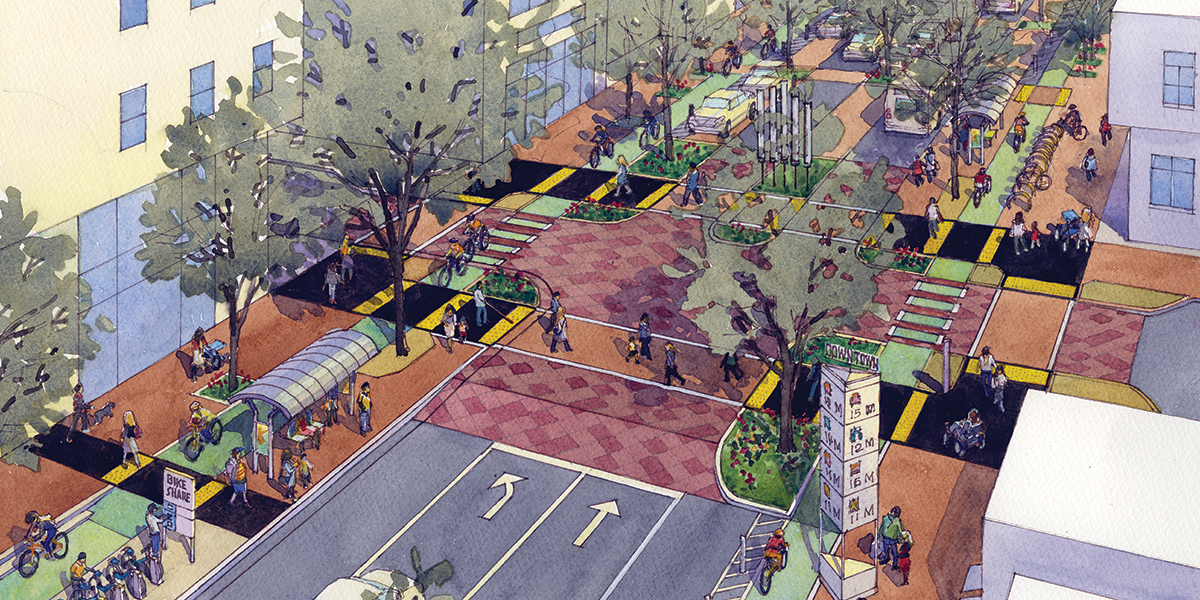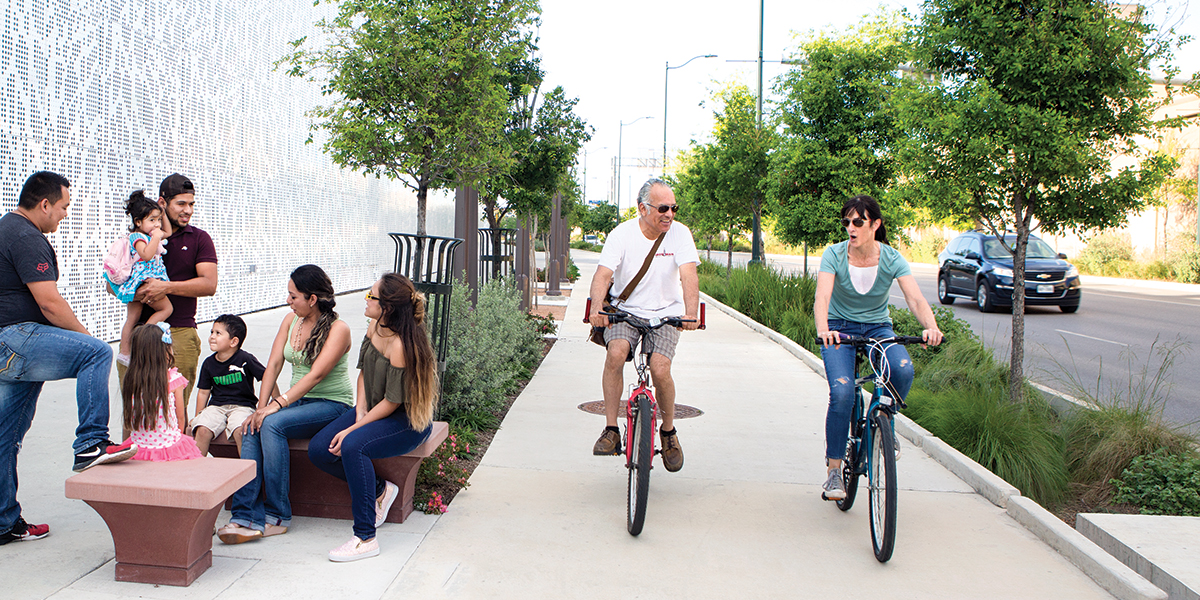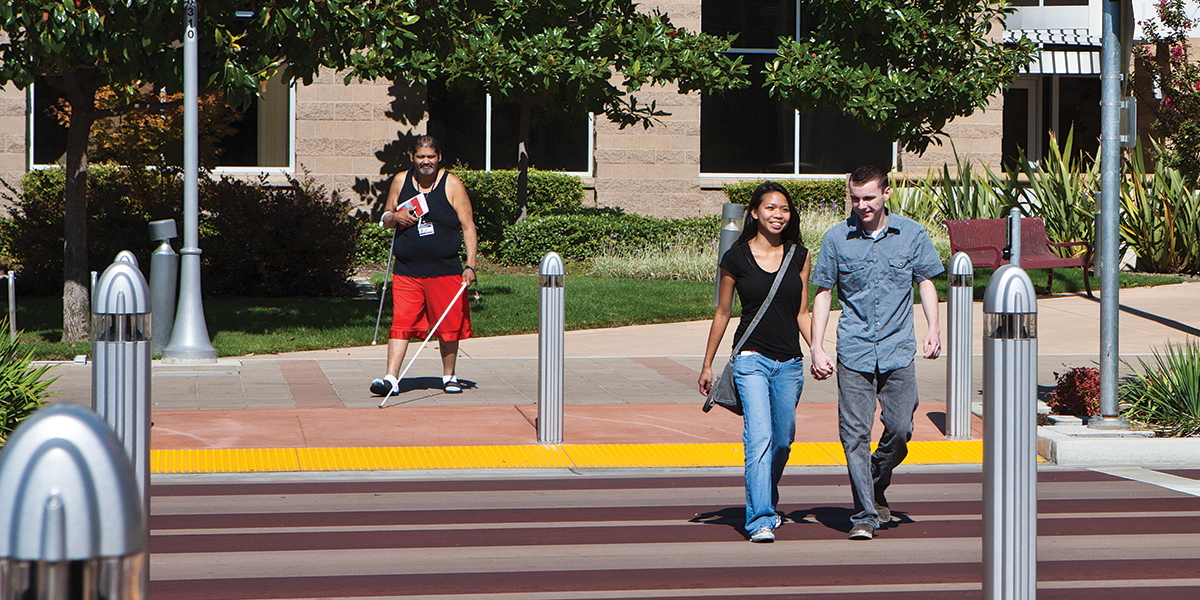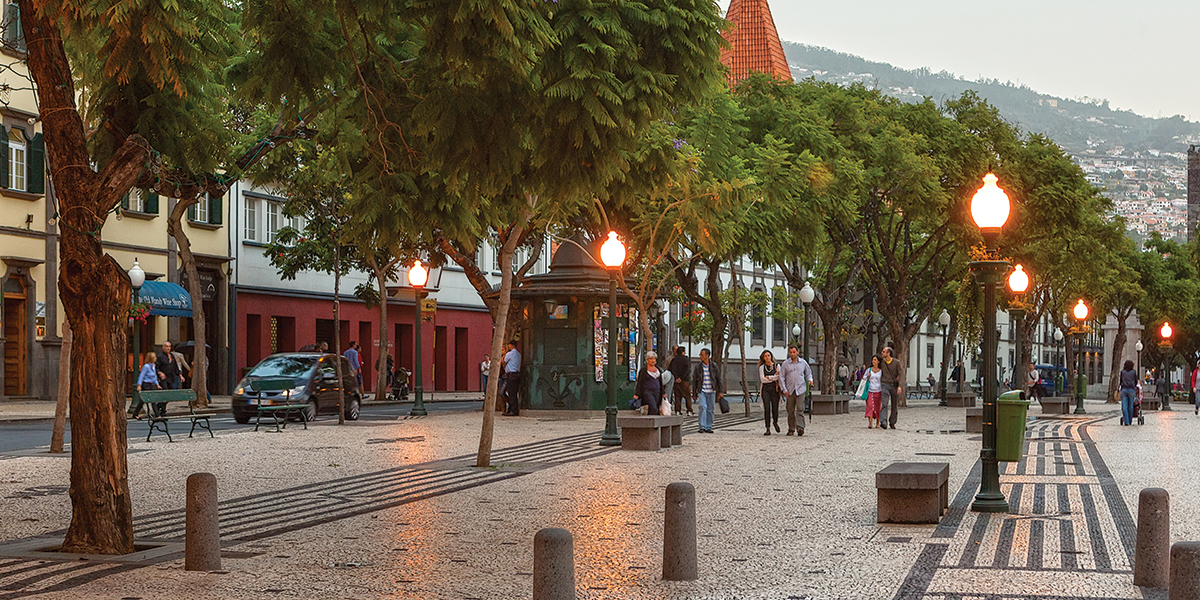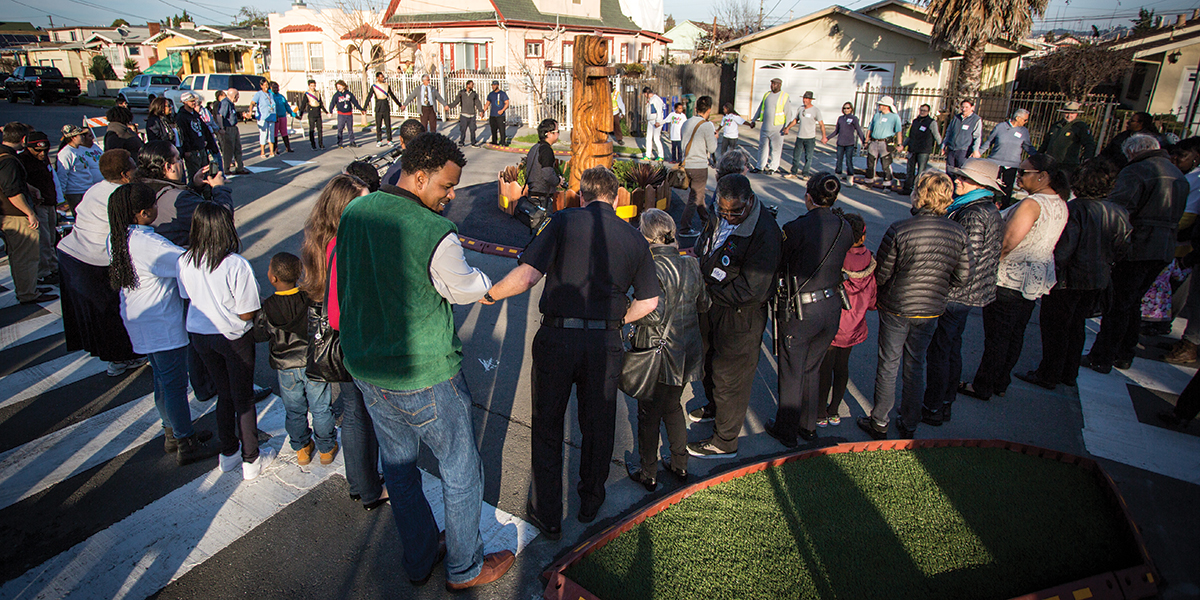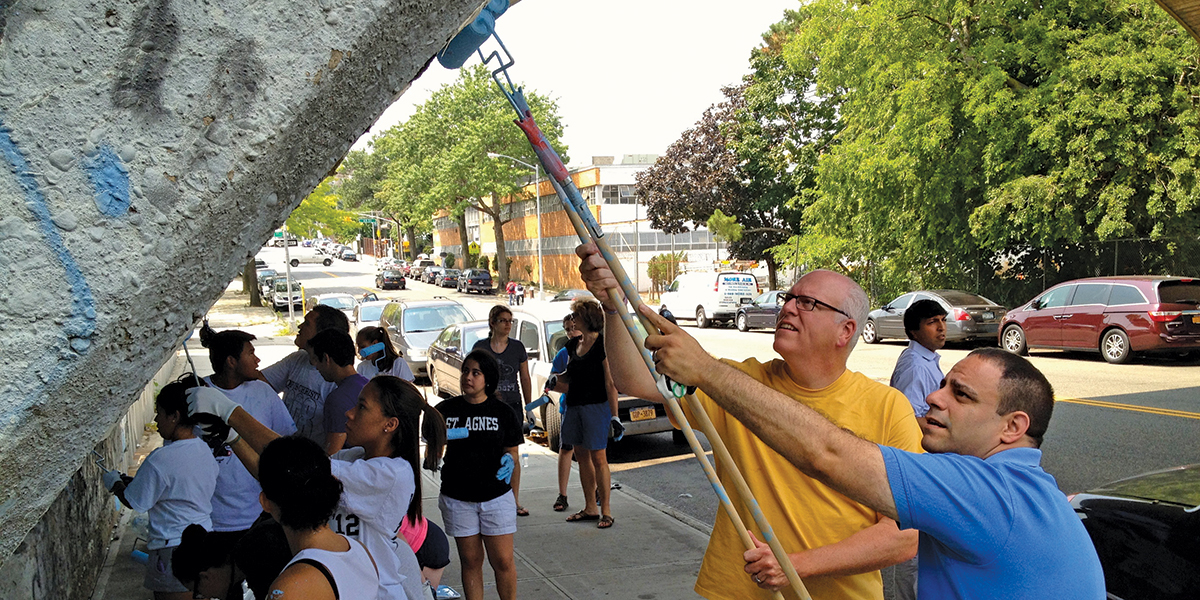We used to grow up on the street. We’d play, we’d walk to the neighbors with a casserole for the block potluck, we’d ride bikes, play games, hang out, socialize. So would our pets. Drivers knew enough to watch out for us. We all survived and thrived. We want that again. Our book, Streets Reconsidered is how we get there. In this series of excerpts we'll share some thoughts and design guidelines to get you started (Read Part 1: Streets Are for People).
Many different types of streets serve different purposes, but all streets should be designed recognizing that humans will be using the street. Streets operate differently when designed for high volume, fast traffic or for low volume, slow traffic. People behave differently according to age, abilities, interests and family situation, at different times of day, day of the week or season of the year.
A well-designed grid of streets will provide the community with different experiences—both when traveling and when lingering. Here are some overarching principles to keep in mind while considering a street redesign, to help determine the appropriate expanded functions, elements and programming for a range of streets.
Design for Humans. Most of our streets are too large, too wide (often wide enough to land a passenger plane) and monotonously long, with little detail to engage the human eye. They lack the intimate feel that allows users, especially pedestrians and bicyclists, to feel safe and comfortable. Street corridors don’t need to have any more than 50 percent of the space devoted to cars, and all excess space not used by cars can then be repurposed. Reducing street width, breaking up the length, and adding medians, trees, art and vertical elements can create a series of interconnected living rooms with a beginning, middle and an end.
Right Size. If travel lanes are too wide, they encourage speeding. If bike facilities are too wide and unprotected, they encourage vehicles to use them as an additional lane, or just drive faster. If sidewalks are too wide and not activated by adjoining ground floor uses, they feel stark and uninviting. Ensuring that travel lanes, bike facilities, pedestrian pathways and crosswalks are appropriately sized in relation to each other creates mutual respect between the different modes of travel.
Provide Multiple Benefits. Especially in today’s economic climate, it’s important to maximize impact by designing and locating streetscape elements that offer multiple benefits. For example, a tree provides shade, helps clean the air, and can be positioned to calm traffic. Lighting illuminates an area, while also providing a feeling of enclosure, safety and a sense of identity for the area. And sidewalks provide areas for pedestrians to walk and stroll, while allowing opportunities for outdoor dining and other commercial activities. These are critical economic development opportunities for small and large businesses, and can provide a valuable source of income for towns and cities.
Design for multimodal shift. Ensuring that walking, biking and taking transit feels safe, convenient and comfortable is the basic foundation for shifting short and medium trips away from cars. Envisioning walking, biking and transit as the primary modes of travel is a paradigm shift in how we design streets.
Design for Tomorrow. Technology is constantly evolving, as are the sizes and types of vehicles we drive. Technological advancements in traffic signalization have already increased the overall capacity of roads, as will driverless technology. So design streets to ensure that streetscape improvements like redesigned curbs don’t impede future opportunities. For example, flexible sidewalks can be designed at the same grade as rest of the street, with bollards and planter boxes providing the same sense of safety as concrete curbs. As travel lanes for cars decrease in size, the extra space created can be used for wider sidewalks, more trees, and more bicycle and pedestrian amenities.
This is the second in an 8-part series excerpted from Iacofano’s and Malhotra’s new book, Streets Reconsidered: Inclusive Design for the Public Realm. Purchase the book using the promo code MIG19 for a 20% discount through Routledge (with free shipping!). Coming next month, Part 3: Designing Flexible Streets.
Daniel Iacofano, PhD., FAICP, FASLA, has over 30 years of experience in community-based urban planning and design and has consulted with communities worldwide.
Mukul Malhotra, one of the creators of re:Streets, works on the ground with cities and communities to sustainably redevelop streets and improve the built environment for everyone.

